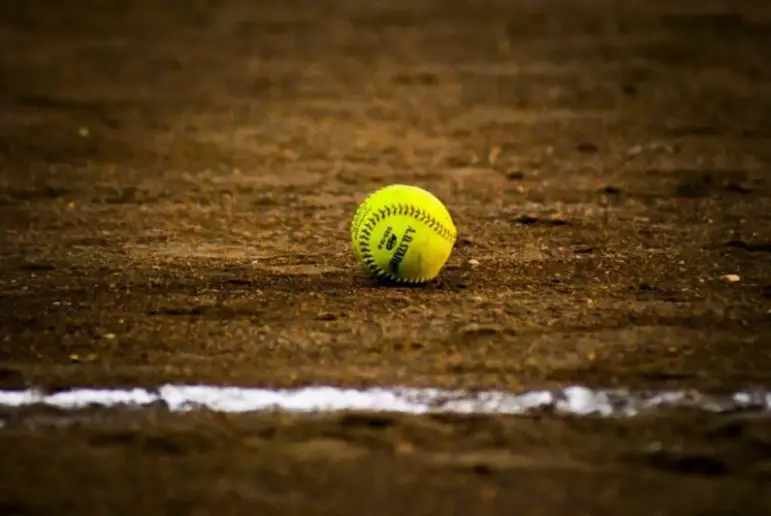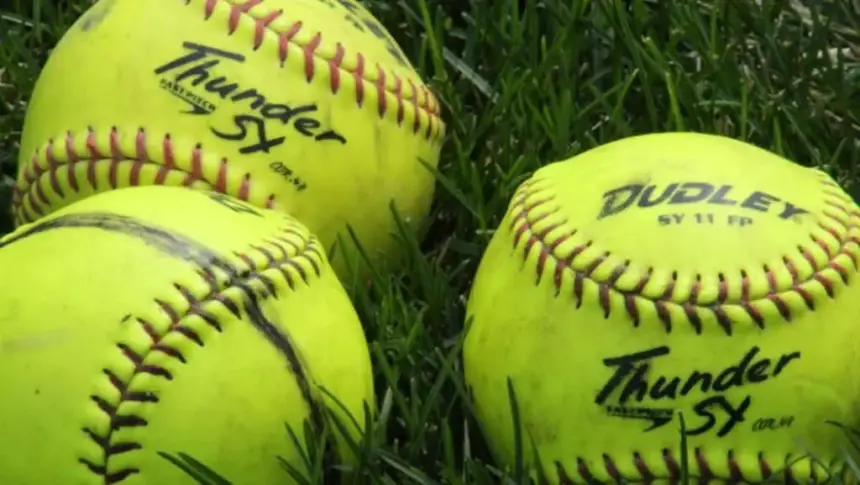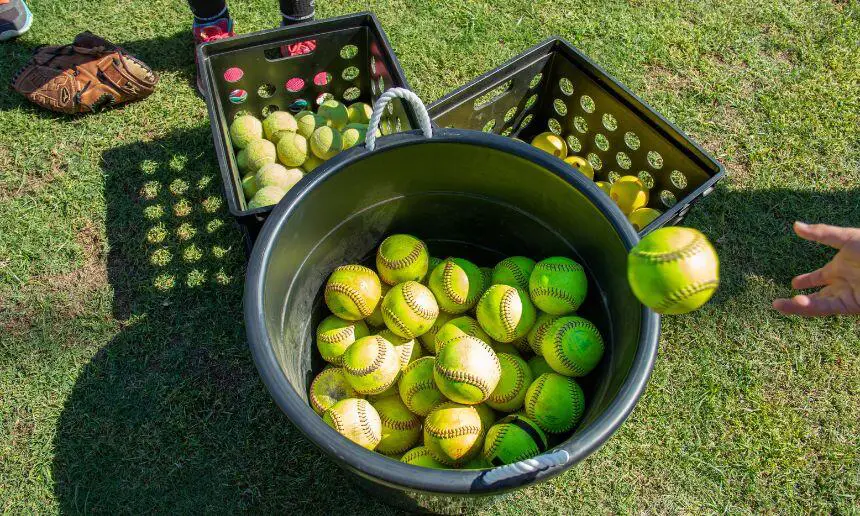How Much Does A Softball Weigh? (Pounds And Grams)
Initially, softball was created as a version of baseball modified to be played indoors.
This meant that the playing equipment had to be adjusted to suit these new conditions.
Due to the closed space and smaller field, a softball was bigger, heavier, and softer compared to a baseball.
New balls provided a safer environment for the players and more dynamic gameplay in the cramped indoor space.
Today, softballs are harder than before but still softer, larger, and heavier than balls in baseball.
With the distance from the pitching circle to the batter box much shorter than in baseball, softball hitters have significantly less time to react and the size and weight of softball serve to provide an even playing field.
Furthermore, balls may vary depending on the age group and the form of sport played.
So, the answer to the question of how much does a softball weigh is not that simple.
Table of Contents
How Much Does A Softball Weigh?
Softballs come in various sizes, depending on the competition. Of course, this also impacts how much they weigh.
Adult Fastpitch
The regulation ball used in most adult fast pitch softball leagues has a 12-inch circumference and weighs between 6.25 and 7 ounces (177-198 grams).
A similar ball is also used for slow pitch softball for adults and fast pitch for boys over the age of 13.
Female Slowpitch
Players in slow pitch leagues for female players under the age of 18 and kids aged 12 or younger, as well as youth fast pitch competitions, commonly use a slightly smaller ball.
The circumference of this ball is 11 inches, while the weight is in the 5.8-6.2 ounces (165-175 grams) range.
Chicago-Style Softball
Balls for Chicago-style softball, a slow pitch variant popular in the Chicago area and across the Midwest, are much larger and feature a 16-inch circumference.
Their weight ranges from 9 to 10 ounces (255-283 grams).
What Are Softballs Made Of?

To understand why softballs weigh so much and why they are heavier than baseballs, you should first learn what they’re made of.
Unlike baseballs, softballs don’t have the midsection with yarn windings around the core.
So, a softball consists only of the center or the core and the cover, sewn together with seam or stitches.
The core of the softball is made using a synthetic mixture, in most cases, polyurethane.
Other materials that can be used for the softball center include cork or a special mixture of cork and rubber, known as kapok.
The cover can be made of either natural or artificial materials. The three most commonly used are natural leather, rubber, and synthetic.
The cover is usually dyed yellow to make the ball more visible and glued or cemented to the core. Different parts of the cover are held together by stitching made of either cotton or linen.
Different Types Of Softballs

As I already explained, softballs come in various sizes and weights and are made of different materials.
While at an amateur level different ball types are often interchangeably, a more serious approach to the game of softball reveals that not all of them are equal.
Certain types of softball have certain advantages as they’re tailored to the requirements of a particular version of the game.
Each softball league has its own set of rules determining specific measurements, weight, density, and even color.
Below, I’ll look into a couple of main criteria used to differentiate different types of softballs.
Types Of Softballs Based On The Version Of The Game
The basic distinction between different softball types is what variant of the sport they’re indeed for.
Even though they are fairly similar, each version of softball has slightly different rules, pace, and gameplay.
- Slow Pitch Balls are designed in a way that makes them fly at slower speeds and reach smaller distances. Depending on the age, slow pitch leagues may use 11 or 12-inch balls, with the former weighing 6.25-7 ounces, and the latter 5.8-6.2 ounces.
- Fast Pitch Balls are created to travel at higher speeds both when pitched and off the bat, and be very reactive. Similar to slow pitch, fast pitch leagues may use 11 or 12-inch softballs.
- Chicago Style Balls are much larger and softer with a 16-inch circumference. They don’t travel very far off the bat, meaning fewer home runs, but making them suitable for games in the park or small neighborhood fields.
Types Of Softballs Based On Compression Rating

One of the major characteristics of softball, making it more suitable for a particular style of play, is its compression rating.
The softball compression indicates how much force is needed to compound the ball a quarter of an inch.
So, higher compression and more force needed will mean that the ball is harder and vice-versa.
More compression will cause more of a trampoline effect and fly further off the bat. Depending on the level of compression, there are three main types of softballs.
High-Compression Softball is commonly the ball used at the highest levels of the fast pitch game. Usually, these are premium-quality 12-inch balls with a 530-pounds maximum compression rating. They’re commonly used with bats that flex only slightly at the contact.
Mid-Compression Softball has a compression rating in the 375-530 pounds range. They’re most commonly used for slow pitch games but are also frequently seen at fast pitch practices. Their circumference is at least 11 inches.
Low-Compression Softball is the softest, with a compression rating of 375 pounds or lower, and is available in both 11 and 12-inch sizes. The most common use of this type of softball is in youth leagues as they’re much safer compared to balls with higher compression.
Conclusion
How much a softball weigh is one of the key factors in how the game itself looks.
If softballs were significantly more or less heavier, we would probably be watching a completely different sport.
The weight of the ball dictates the pace of play and maintains the balance between the pitcher and the batter, providing no significant advantage to either of them.
Of course, different versions of the sport use balls of varying weights, as do the different age groups.
So, it’s always important to make sure which softball weight is best for your level of play as it may impact your performance, or even be illegal in a particular league.




